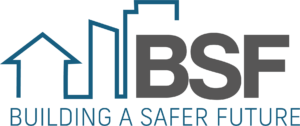FIS Signs Building a Safer Future Charter
The Grenfell Tower tragedy brought to the fore the need to do more to ensure the safety of all the buildings we live, work, and play in. FIS has committed significant resource to a number of workstreams organised by Government and the Industry to support this effort. As part of this ongoing commitment the FIS has now signed the Building a Safer Future Charter.
 What is the Building a Safer Future Charter?
What is the Building a Safer Future Charter?
The Building a Safer Future (BSF) Charter is a proactive response to Dame Judith Hackitt’s Building a Safer Future Review in the wake of the Grenfell Tower tragedy. Central to the Charter is putting people’s safety first in how we plan for, design, build, maintain, and look after the safety of the buildings we live, work, or play in and protect those that use them.
There is a need for substantial culture change, to bring in new practices, learn and develop and work hard at trying to reassure the public and regain their confidence and trust in the safety of buildings, both in how they are built and also how they are managed. The Charter aims to support this change and drive development and learnings around a collaborative community of those committed to putting people’s safety first.
By signing the charter FIS is joining The UK Government is encouraging industry-wide commitment to sign-up to the Building a Safer Future Charter, is included its response to the ‘Building a Safer Future’ consultation – ‘A reformed building safety regulatory system’, published on 2 April 2020.
How did the charter come about?
Originally conceived and created by a group of ‘Early Adopters’ comprising local authorities, contractors, housing associations and property developers, with the support of the Ministry of Housing, Communities and Local Government (MHCLG), the Considerate Constructors Scheme (CCS) was appointed by the Early Adopters to develop and manage the BSF Charter going forwards.
What will the Charter do?
Driving culture and behaviour change in the safety of the built environment is essential to putting people’s safety first. In driving this change, the BSF Charter will seek to provide the industry and public with:
An engaged online community where good practice on building safety is shared and relevant examples, case studies and other resources are signposted through a Learning & Excellence Hub.
A public and workforce engagement portal for anyone (public, resident, other building users, those working across the built environment) to raise building safety concerns in relation to projects registered and verified with the BSF Charter. (To be launched end 2020).
Benchmarking and verification (working closely with and learning from the ‘Responsible Care’ benchmarking approach adopted by the chemical industry).
What next?
Organisations can sign up to become Registered Signatories to the of the BSF Charter here, and will, by doing so:
Confirm your organisation’s commitment to being part of driving cultural change in building safety.
Demonstrate a strong and positive statement of support for the vision of the Charter and its five commitments to the public, government, your clients, co-workers, and supply chain as well as the rest of the industry.
Collaborate through submitting and using the resources on the online community provided by the Charter’s Learning and Excellence Hub.
Amongst its many activities The Hub is soon to launch a Learning and Excellence Hub to encourage an open exchange of information.
FIS is recommending members working on High Risk Residential Buildings (HRRBs) become a Registered Signatory of the Building a Safer Future Charter in their own right here.
For more information, please visit www.buildingasaferfuture.org.uk
FIS is hosting a webinar with Amanda Long, CEO of the Building a Safer Future Charter on the 18 March at 12:30 – reserve your place here.
